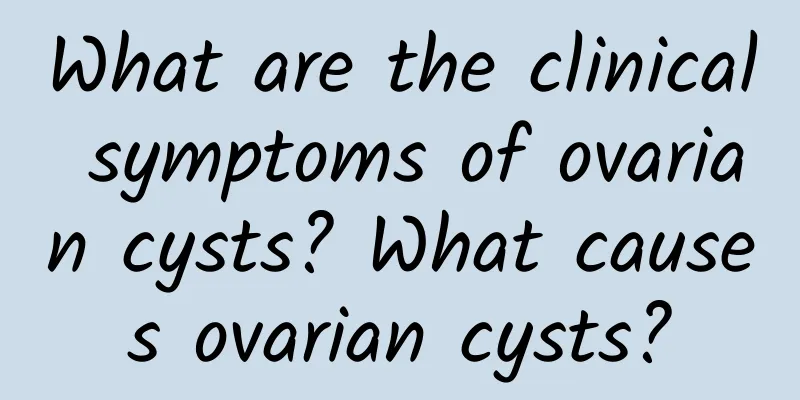What are the symptoms of cervical hypertrophy?

|
Cervical hypertrophy is actually a type of chronic cervicitis, but many people don’t know much about it. Also, since the symptoms of cervical hypertrophy are around the cervix, it is difficult to detect. Below, I will explain to you some knowledge about cervical hypertrophy. 1. The main symptom of cervical hypertrophy is increased vaginal discharge. Acute cervicitis produces purulent vaginal discharge, accompanied by lower abdominal pain, or bladder irritation symptoms such as frequent urination, urgency, and pain. Mild cervical hypertrophy patients may have no systemic symptoms. When the inflammation spreads to the pelvic cavity along the uterosacral ligament, there may be waist pain, lower abdominal distension, and dysmenorrhea, which worsens during defecation and sexual intercourse. 2. The surface of the cervix may also be damaged or irritated by inflammation, resulting in erosions caused by squamous epithelial shedding and columnar epithelial hyperplasia. These are also symptoms of cervical hypertrophy. After the inflammation of cervical hypertrophy is treated, the local congestion and edema of the cervix subsides, and the surface of the cervix is covered with squamous epithelium again, returning to a smooth state. However, the hyperplastic connective tissue does not subside, but still exists, and sometimes even increases by 1-2 times. 3. Symptoms of cervical hypertrophy include cervical congestion and edema, or erosion, purulent secretions discharged from the cervical canal, and pain when the cervix is touched. Cervical hypertrophy can show varying degrees of cervical erosion, hypertrophy, polyps, glandular cysts, and eversion, or purulent secretions at the cervical opening, and a hard cervix when palpated. The above is the most specific description of the symptoms of cervical hypertrophy, for reference only. I hope it can help everyone better understand the knowledge of cervical hypertrophy. If you have other questions about cervical hypertrophy, you can contact our online experts to answer your questions. For more information, please visit the cervical hypertrophy disease special topic at http://www..com.cn/fuke/gjjb/fd/ or consult an expert for free. The expert will then give a detailed answer based on the patient's specific situation. |
<<: How to prevent ovarian cysts
>>: In summer, we should do a good job in preventing pelvic inflammatory disease
Recommend
The symptoms of vulvar leukoplakia include the following:
Many people must know or understand the disease o...
What should women pay attention to after uterine fibroid surgery?
Everyone knows that uterine fibroids are a very c...
Dietary guidance for hyperprolactinemia
Hyperprolactinemia patients need to have a correc...
What are the measures to prevent cervical warts?
We all know that public toilets have both squat t...
How much does the second stage treatment of uterine effusion cost?
Hydrometra is a group of diseases caused by infla...
Can drinking whey protein help you build muscle and lose weight? The data says this
Do you have enough muscles in your body? Sufficie...
What is the best way to treat uterine fibroids?
Treatment should be considered comprehensively ba...
Don't take painkillers easily for dysmenorrhea
Many young women have experienced dysmenorrhea. A...
Why is my period delayed by seven or eight days every month?
It may be normal for your period to be seven or e...
Experts tell you how to stay away from cervical erosion
As women's status improves, more and more peo...
What is pregnancy and menstruation?
Pregnancy menstruation sounds a bit like menstrua...
Does bacterial vaginosis affect menstruation?
Will bacterial vaginosis cause irregular menstrua...
There are several ways bacterial vaginosis is transmitted
Everyone should know about bacterial vaginosis. O...
Does Chinese medicine have an effect on amenorrhea?
Traditional Chinese medicine can have an effect o...
The symptoms of mild cervical erosion are mainly as follows
Cervical erosion is a common gynecological diseas...









